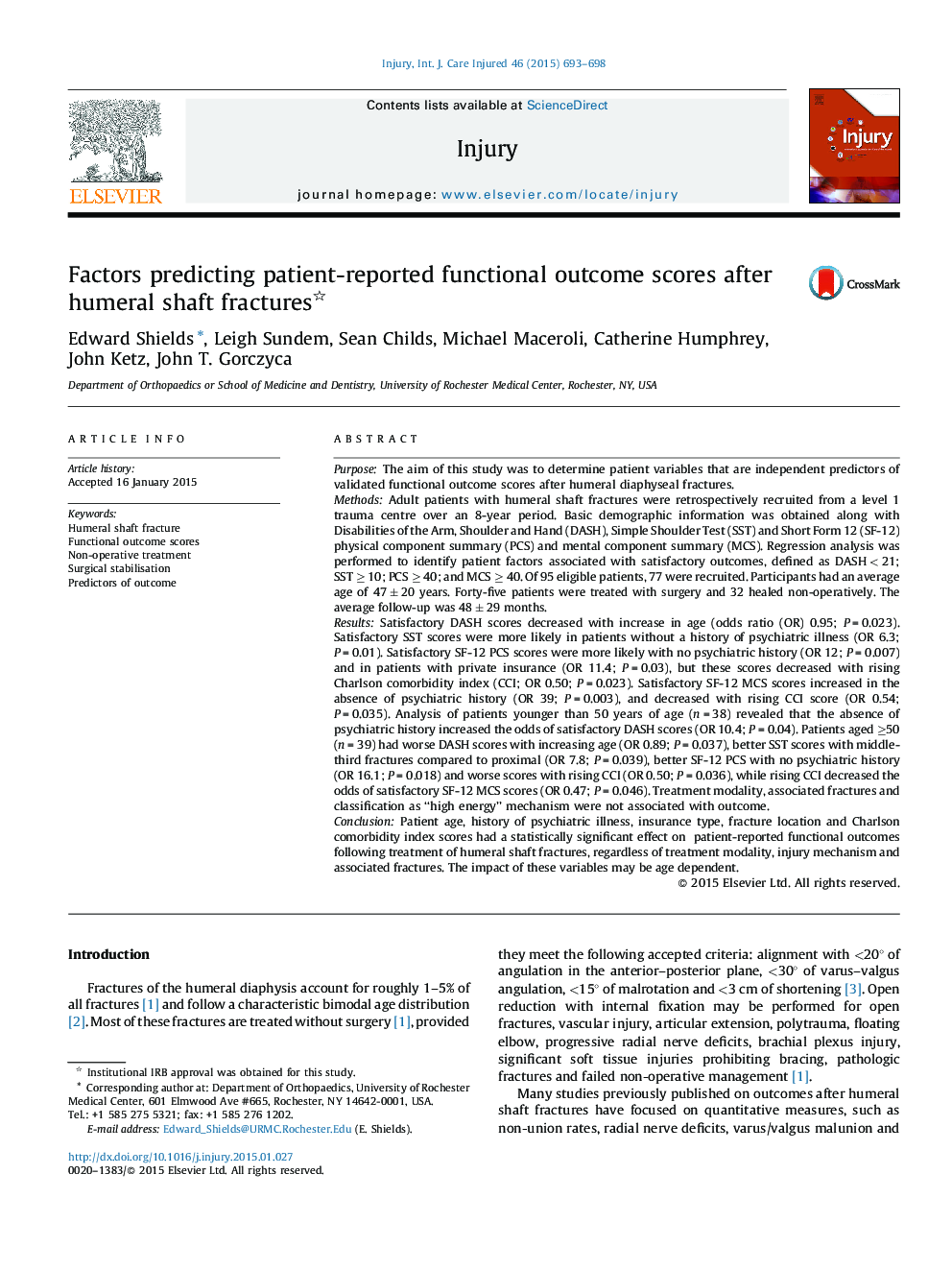| کد مقاله | کد نشریه | سال انتشار | مقاله انگلیسی | نسخه تمام متن |
|---|---|---|---|---|
| 3239068 | 1205981 | 2015 | 6 صفحه PDF | دانلود رایگان |
PurposeThe aim of this study was to determine patient variables that are independent predictors of validated functional outcome scores after humeral diaphyseal fractures.MethodsAdult patients with humeral shaft fractures were retrospectively recruited from a level 1 trauma centre over an 8-year period. Basic demographic information was obtained along with Disabilities of the Arm, Shoulder and Hand (DASH), Simple Shoulder Test (SST) and Short Form 12 (SF-12) physical component summary (PCS) and mental component summary (MCS). Regression analysis was performed to identify patient factors associated with satisfactory outcomes, defined as DASH < 21; SST ≥ 10; PCS ≥ 40; and MCS ≥ 40. Of 95 eligible patients, 77 were recruited. Participants had an average age of 47 ± 20 years. Forty-five patients were treated with surgery and 32 healed non-operatively. The average follow-up was 48 ± 29 months.ResultsSatisfactory DASH scores decreased with increase in age (odds ratio (OR) 0.95; P = 0.023). Satisfactory SST scores were more likely in patients without a history of psychiatric illness (OR 6.3; P = 0.01). Satisfactory SF-12 PCS scores were more likely with no psychiatric history (OR 12; P = 0.007) and in patients with private insurance (OR 11.4; P = 0.03), but these scores decreased with rising Charlson comorbidity index (CCI; OR 0.50; P = 0.023). Satisfactory SF-12 MCS scores increased in the absence of psychiatric history (OR 39; P = 0.003), and decreased with rising CCI score (OR 0.54; P = 0.035). Analysis of patients younger than 50 years of age (n = 38) revealed that the absence of psychiatric history increased the odds of satisfactory DASH scores (OR 10.4; P = 0.04). Patients aged ≥50 (n = 39) had worse DASH scores with increasing age (OR 0.89; P = 0.037), better SST scores with middle-third fractures compared to proximal (OR 7.8; P = 0.039), better SF-12 PCS with no psychiatric history (OR 16.1; P = 0.018) and worse scores with rising CCI (OR 0.50; P = 0.036), while rising CCI decreased the odds of satisfactory SF-12 MCS scores (OR 0.47; P = 0.046). Treatment modality, associated fractures and classification as “high energy” mechanism were not associated with outcome.ConclusionPatient age, history of psychiatric illness, insurance type, fracture location and Charlson comorbidity index scores had a statistically significant effect on patient-reported functional outcomes following treatment of humeral shaft fractures, regardless of treatment modality, injury mechanism and associated fractures. The impact of these variables may be age dependent.
Journal: Injury - Volume 46, Issue 4, April 2015, Pages 693–698
